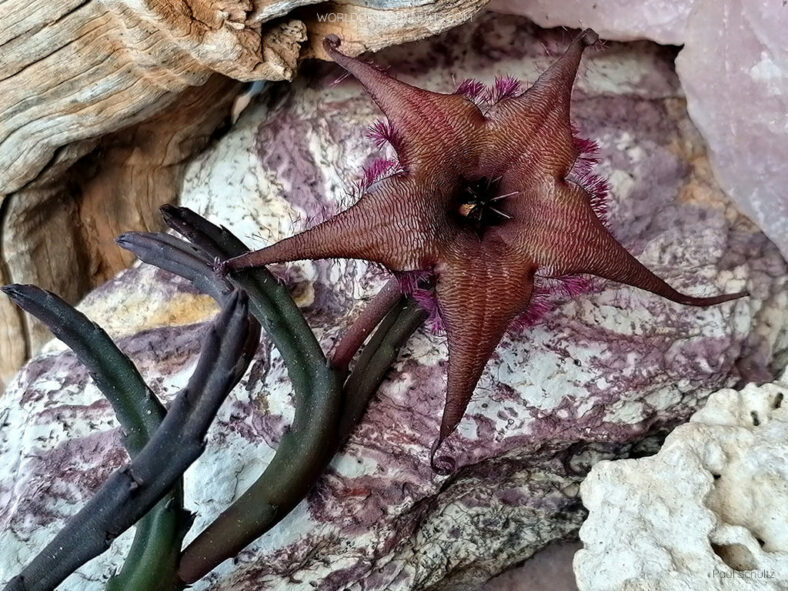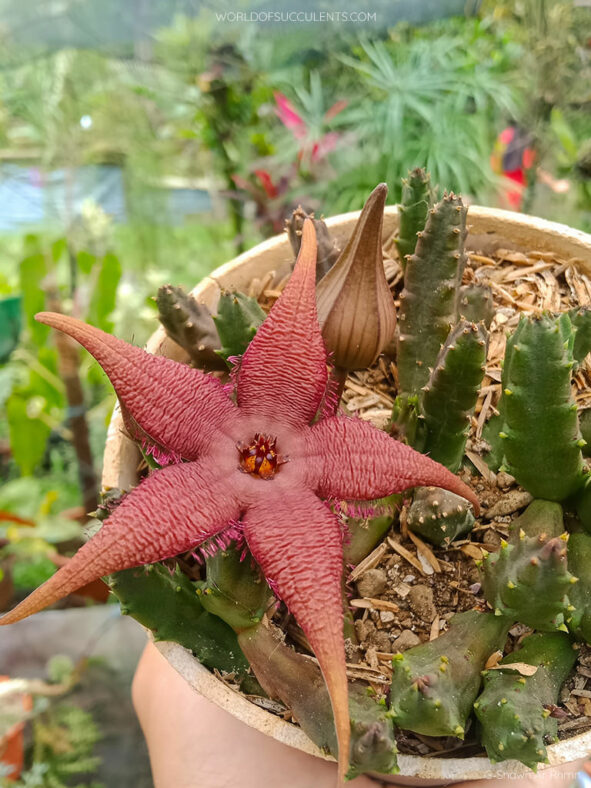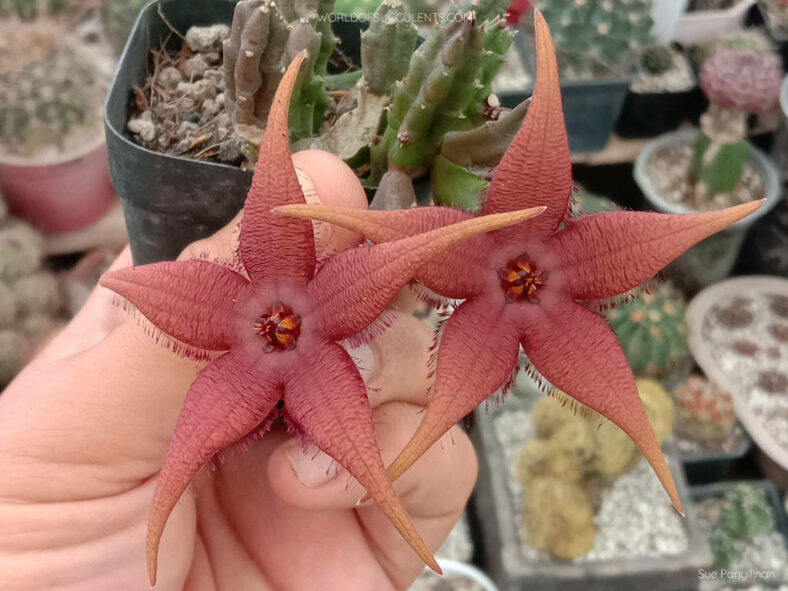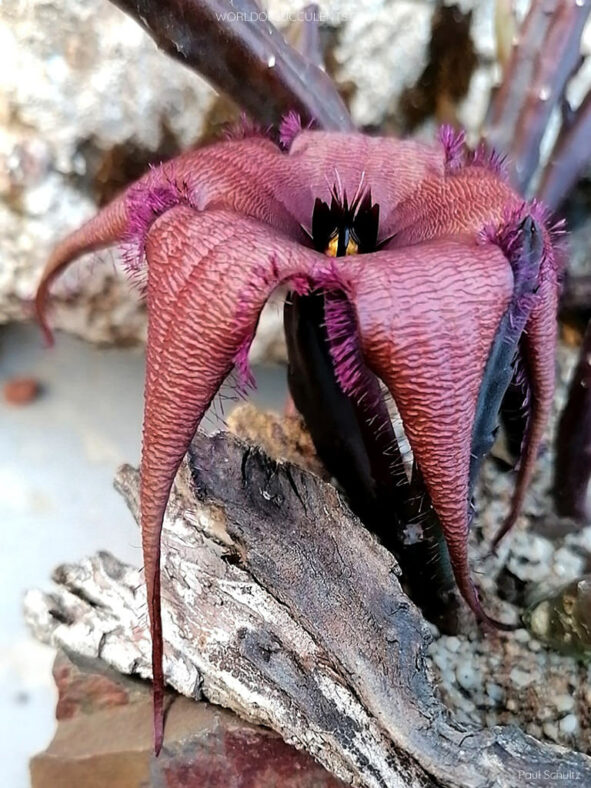Scientific Name
Stapelia schinzii var. angolensis Kers
Synonym(s)
Ceropegia schinzii var. angolensis, Gonostemon schinzii var. angolensis
Scientific Classification
Family: Apocynaceae
Subfamily: Asclepiadoideae
Tribe: Stapeliae
Genus: Stapelia
Etymology
The varietal epithet "angolensis" (pronounced "an-go-LEN-sis") refers to Angola, where this variety was first discovered in the Serra da Chela mountain range.
Origin
Stapelia schinzii var. angolensis is native to southern Angola and northern Namibia. It grows in shallow soil in rock crevices and on ledges along cliff edges.
Description
Stapelia schinzii var. angolensis is a small succulent with loosely spreading and sometimes almost prostrate stems with tubercles that extend downward, forming four angles. It has more slender stems and smaller flowers than Stapelia schinzii var. schinzii. The stems are green and usually suffused with purple. They can grow up to 3 inches (7.5 cm) long and 0.6 inches (1.5 cm) thick.
The attractive, usually solitary flowers appear on stalks that can grow up to 2.4 inches (6 cm) long from below the middle of the stems, usually in fall. They are reddish-brown with transverse, somewhat shiny ridges on the lobes, adorned with dark purple hairs on the edges. The flowers can reach up to 3.2 inches (8 cm) in diameter. The fruits are smooth follicles with quite large seeds.

How to Grow and Care for Stapelia schinzii var. angolensis
Light: S. schinzii var. angolensis thrives in full sun or partial shade during the hottest summer days. Too much sun causes the stems to develop a protective pigmentation or get sunburned. Too little light leads to weak, thin stems and decreased flower production. Indoors, place the plant near the brightest window in your home.
Soil: The right soil is crucial to successfully growing S. schinzii var. angolensis. Use a commercial potting soil mix for succulents, or prepare your own with 50 to 70 % mineral grit, such as coarse sand, pumice, or perlite.
Temperature: This plant thrives in warm outdoor environments with low to moderate humidity but does not like winter cold and should remain moderately dry and warm during its winter dormancy. S. schinzii var. angolensis can withstand temperatures as low as 40°F (4.4°C). USDA Plant Hardiness Zones 11a to 11b, 40°F to 50°F (4.4°C to 10°C).
Watering: S. schinzii var. angolensis has typical watering needs for a succulent. During the growing season, water your plant thoroughly and allow the soil to dry between waterings. The plant goes dormant in winter and needs almost no water, about once a month.
Fertilizing: To keep your plant healthy and thriving, fertilizing during the growing season is a good idea. Feed with water-soluble fertilizer diluted to half the recommended strength.
Repotting: S. schinzii var. angolensis will benefit from fresh potting soil every two or three years. Repot your plant in spring, just before the growing season begins. Choose a container with drainage holes.
Propagation: The best way to propagate this succulent is by using stem cuttings. Take cuttings during the growing season to ensure good rooting, and sow the seeds in spring.
Learn more at How to Grow and Care for Stapelia.
Toxicity of Stapelia schinzii var. angolensis
S. schinzii var. angolensis has no toxic effects reported. It is safe around pets and humans.
Links
- Back to genus Stapelia
- Succupedia: Browse succulents by Scientific Name, Common Name, Genus, Family, USDA Hardiness Zone, Origin, or cacti by Genus
Photo Gallery
Click on a photo to see a larger version.


